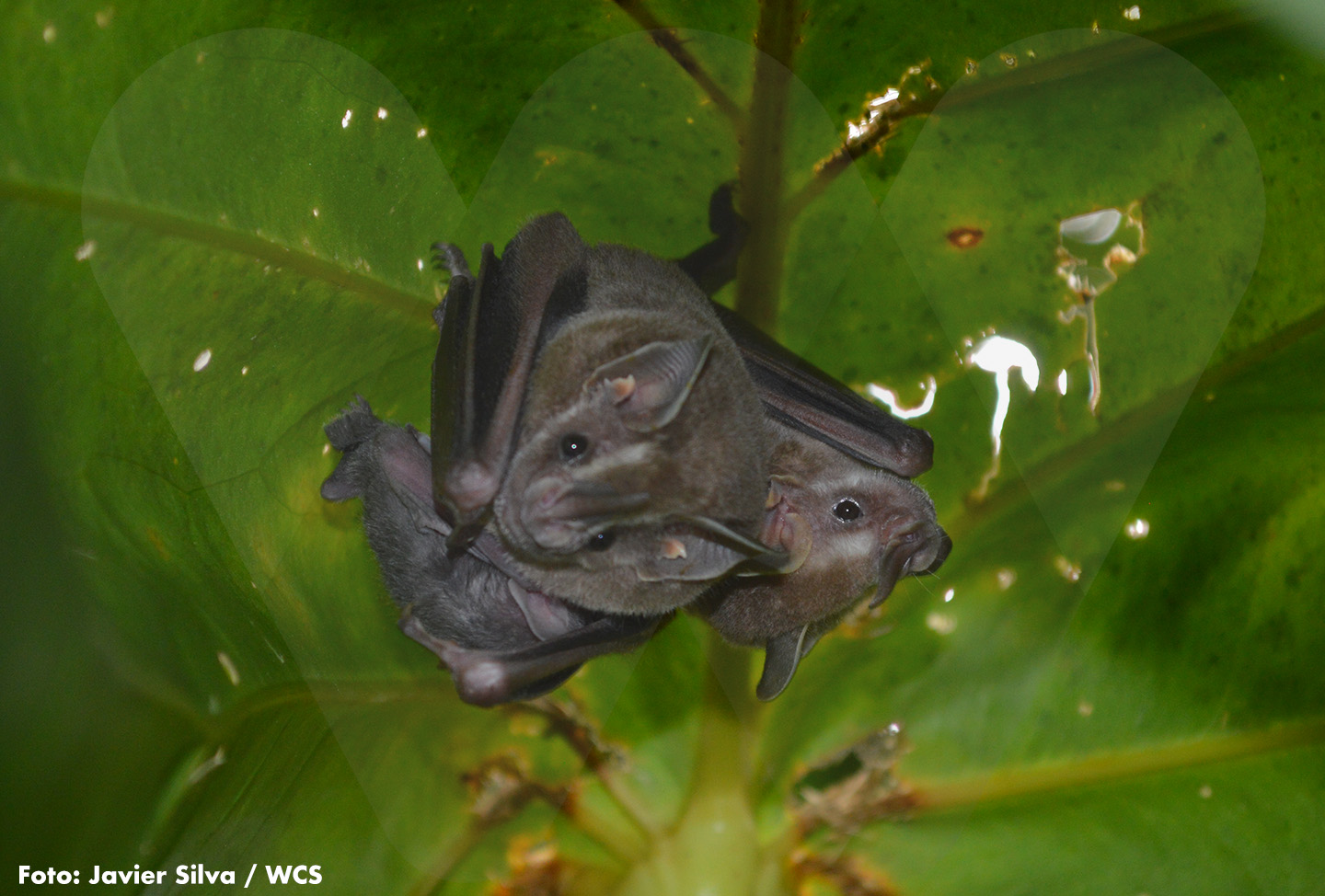Flying bats: some eat insects and fruit, others drink animal blood

Rodents and other small mammals were also identified during the ‘Participatory characterization of conservation targets of the Integrated Management Regional District El Encanto de los Manglares del Bajo Baudó’, conducted by WCS in this protected area.
As part of the ‘Participatory characterization of conservation targets of the Integrated Management Regional District El Encanto de los Manglares del Bajo Baudó’, WCS Colombia, Concosta and Codechocó made a quick sampling of flying and non-flying small mammals living in the southern zone of this region of Chocó.
The study, led by Vladimir Rojas Díaz, biologist and PhD in Biological Sciences of the Universidad del Valle, with the support of local assistants, was done in riparian and mature forests, in zones neighboring the Teteral Stream, tributary of the Capiro River, in the surroundings of the Bacao Stream. All of these sites correspond to the collective territory of the Concosta Community Council.
A line of traps of 106 stations was installed at these sites. Each trap, similar to a rectangular metal box, included two baits: a mix of oats, vanilla extract and water and another mix of corn flour and sardines in oil. Team members readied the traps every morning, hoping to catch small non-flying mammals at night.
In turn, to trap bats, they placed 12 nets (similar to volleyball nets) at the edge of the forests, covering 360 square meters.
The study registered, as main result, the presence of 20 species of small mammals, 3 of marsupials, 2 of rodents and 15 of bats.
Vladimir Rojas´ study was mainly focused on the identification of the bats trapped in the nets. Several of these animals, also called chiropterans, have invaded backyards and building roofs in the region. The most abundant bat corresponds to the species Molossus molossus (known as Pallas's mastiff bat). It thrives on an insect diet.
Alsontrapped in the nets were bats of the species Desmodus rotundus (also known as the common vampire bat). In the Bajo Baudó region, this bat feeds on the blood of cows, pigs, dogs, cats and hens. Several people have, therefore, requested that these flying mammals be eradicated.
“While domesticated animals are herded or roam freely through the jungle, it will not be easy to comply with this objective”, warns Vladimir.
Bats of the genus Myotis, which also feed on insects, and of the species Glossophaga soricin, with a diet of soft fruit, nectar and insects, were spotted at Felipe Barco’s house. These bats were only found in that place and were not seen elsewhere in the region.
In general, for rodents as well as for bats, Vladimir Rojas says that this is only a first sample of what could be found in the entire protected zone. “For now, the general analysis is ambiguous because although, for example, we have detected specialist rodents or mice that depend on certain palms, we have also found common rats connected with human communities. It is, therefore, important that this gathering of information can continue”.
This because the researcher explains that, of the 480 species of mammals estimated to live in Colombia, roughly 250 (52% approximately) live in Chocó and 60% of the 480 corresponds to small species.
“Studies with this small mammal group are not very popular and they require much effort and equipment, reasons why they are not attractive. For these same reasons, funding for research is insufficient. This is, therefore, a great opportunity to contribute, in the mid-term, to the design of conservation strategies to protect this group of animals”, he explained.